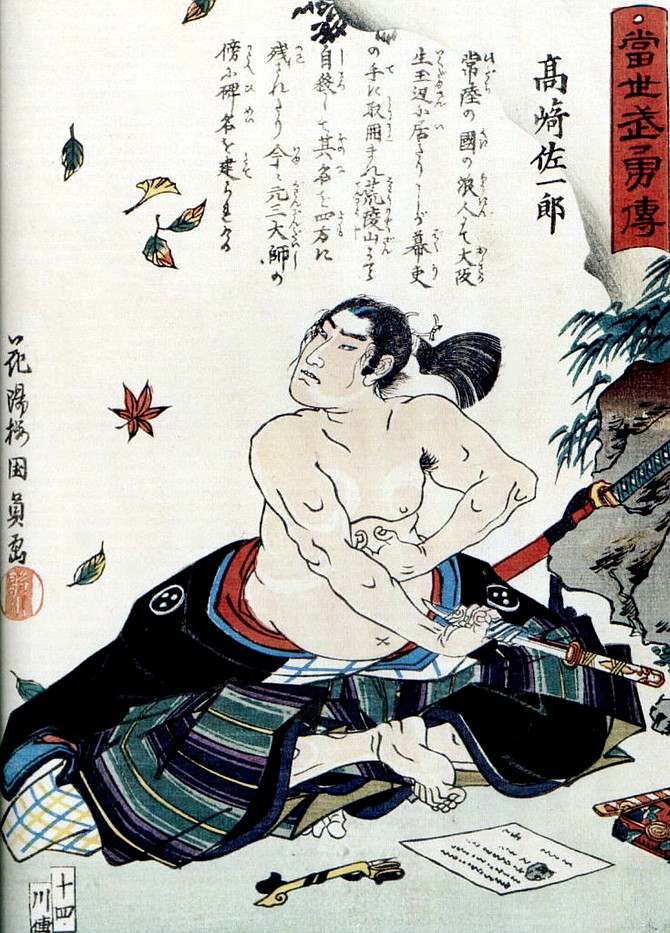 Facebook
Facebook
 X
X
 Instagram
Instagram
 TikTok
TikTok
 Youtube
Youtube

My leisure reading of late has been all about Japan. I'm not sure why I've been reading the bestsellers of the past such as Memoirs of a Geisha and Shogun but they have both made Madama Butterfly, my default favorite opera, a much richer experience dramatically — it also makes more sense.
Cio Cio San, the central character of Butterfly, would have belonged to the generation of geishas just before Sayuri, the central character of Memoirs of a Geisha.
In the first act of Butterfly, Cio Cio San mentions being a geisha; her costume usually makes that obvious. The life of a geisha was better than that of a peasant, but it was close to slavery and there is no doubt it was indentured servitude.
According to Cio Cio San, her age is 15, which would have made her an apprentice geisha. This would also make her very much in debt. Her decision to separate herself from her society makes more sense if we realize she was a victim of her society and the marriage to Pinkerton could be an escape.
In the second act, Yamadori comes-a-calling and wants Butterfly to be his lady. She rebuffs him which makes no sense to middle-class sensibilities. Here is Yamadori — he can solve all of her problems — but it would also mean that she re-enter the caste system she had escaped by marrying Pinkerton.
We know that the Shogun gave Cio Cio San’s father the honor of hara-kiri or seppuku. We say “commit hara-kiri” as if it were a crime, but it was not looked upon that way in Japan.
That her father was honored with hara-kiri means he was samurai which means Butterfly was also samurai. Cio Cio San’s style of killing herself at the end of the opera is in line with the female samurai tradition. The men were required to disembowel themselves while the women were required to slit their throats.
That Cio Cio San is samurai, geisha, and an American Navy-wife creates an infinitely complex figure as all three have established traditions and expectations.
I might be late to the game with learning about the Japanese traditions as they relate to Madame Butterfly, but it has enriched the opera for me.


My leisure reading of late has been all about Japan. I'm not sure why I've been reading the bestsellers of the past such as Memoirs of a Geisha and Shogun but they have both made Madama Butterfly, my default favorite opera, a much richer experience dramatically — it also makes more sense.
Cio Cio San, the central character of Butterfly, would have belonged to the generation of geishas just before Sayuri, the central character of Memoirs of a Geisha.
In the first act of Butterfly, Cio Cio San mentions being a geisha; her costume usually makes that obvious. The life of a geisha was better than that of a peasant, but it was close to slavery and there is no doubt it was indentured servitude.
According to Cio Cio San, her age is 15, which would have made her an apprentice geisha. This would also make her very much in debt. Her decision to separate herself from her society makes more sense if we realize she was a victim of her society and the marriage to Pinkerton could be an escape.
In the second act, Yamadori comes-a-calling and wants Butterfly to be his lady. She rebuffs him which makes no sense to middle-class sensibilities. Here is Yamadori — he can solve all of her problems — but it would also mean that she re-enter the caste system she had escaped by marrying Pinkerton.
We know that the Shogun gave Cio Cio San’s father the honor of hara-kiri or seppuku. We say “commit hara-kiri” as if it were a crime, but it was not looked upon that way in Japan.
That her father was honored with hara-kiri means he was samurai which means Butterfly was also samurai. Cio Cio San’s style of killing herself at the end of the opera is in line with the female samurai tradition. The men were required to disembowel themselves while the women were required to slit their throats.
That Cio Cio San is samurai, geisha, and an American Navy-wife creates an infinitely complex figure as all three have established traditions and expectations.
I might be late to the game with learning about the Japanese traditions as they relate to Madame Butterfly, but it has enriched the opera for me.
Comments